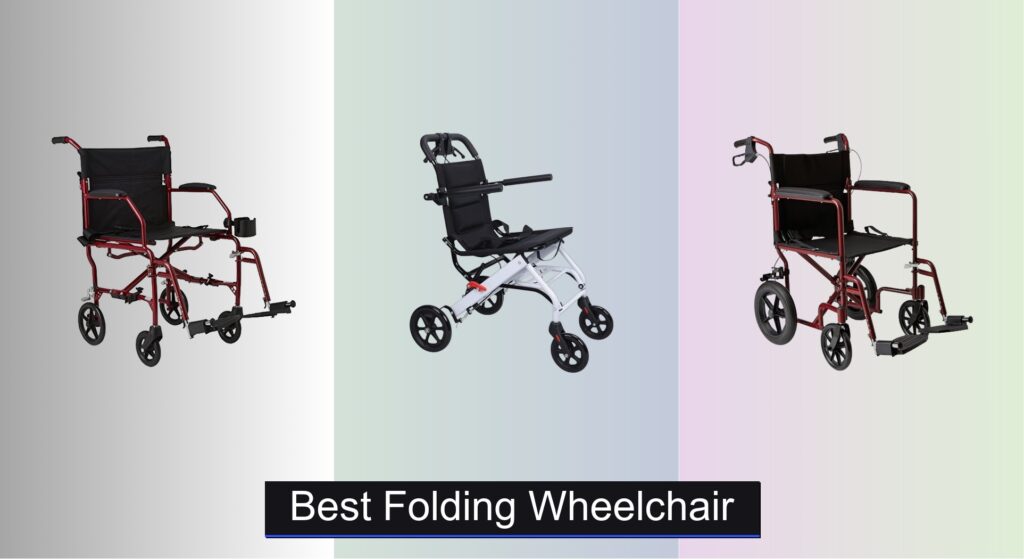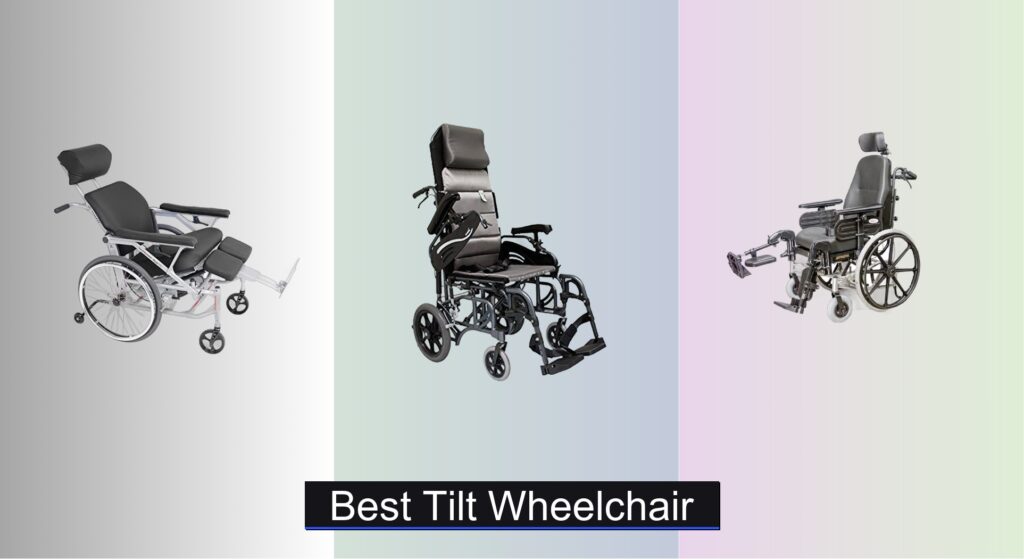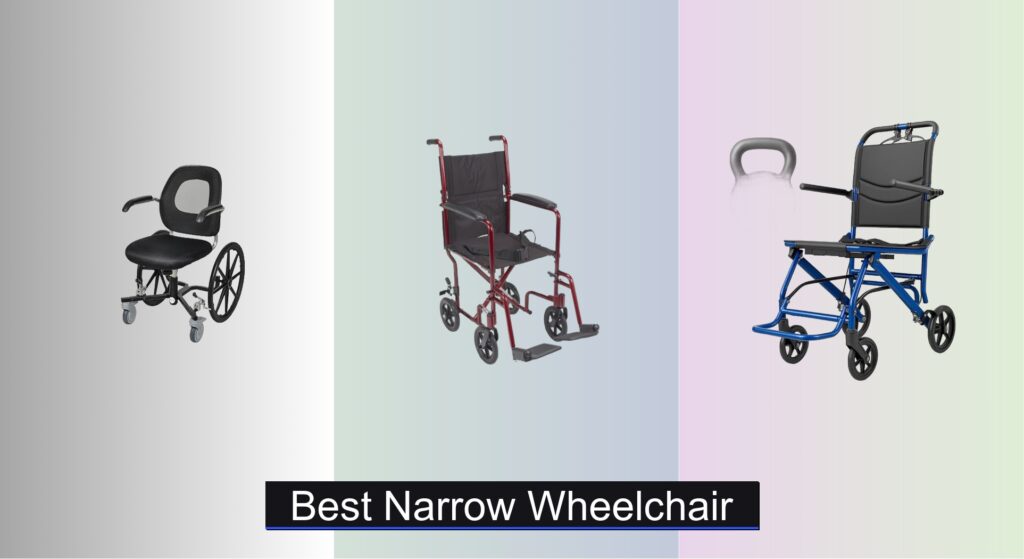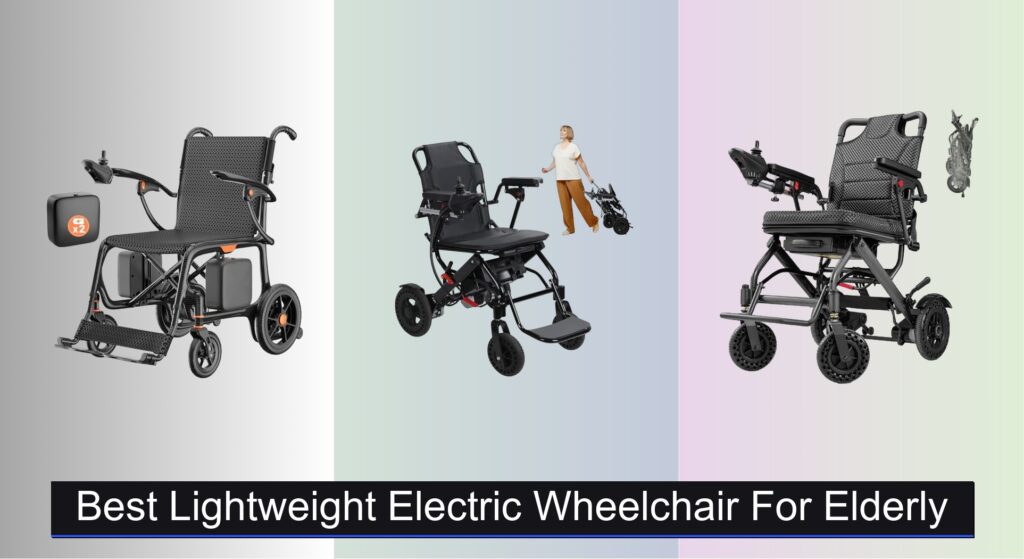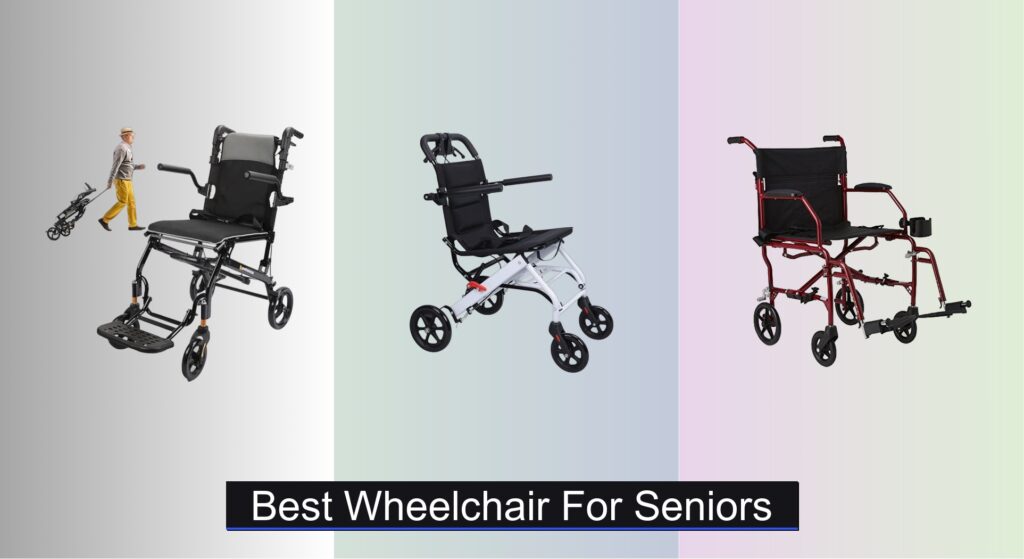For many individuals with mobility challenges, finding a reliable, easy-to-transport folding wheelchair is essential for maintaining independence and quality of life. Bulky, heavy models can be difficult to store, load into vehicles, or maneuver through tight spaces—frustrating both users and caregivers. The right folding wheelchair balances lightweight design, durable construction, and smooth maneuverability without sacrificing comfort or safety.
We analyzed over 50 folding wheelchairs, evaluating key factors like weight (as low as 13.66 lbs), weight capacity (up to 300 lbs), folding speed, and real-world portability. Our top picks deliver exceptional performance, comfort, and value, backed by user reviews and detailed feature comparisons. Keep reading to discover the best folding wheelchair for your needs.
Best Options at a Glance

Medline Ultra Lightweight Transport Wheelchair
Best Overall
- 15 lbs.
- 300 lb.
- 19″
- Aluminum
- 8″ rear, swivel front

Saterkali Ultra-Lightweight 13.66lbs Wheelchair
Best Lightweight
- 13.66lbs
- 180lbs
- Aluminum Alloy
- 1-second collapse
- Polyurethane with 360° casters

Medline Lightweight Foldable Transport Wheelchair
Best Maneuverability
- 26 lb.
- 300 lb.
- 12-inch
- 19″ x 16″
- Yes

Medline Comfortable Folding Wheelchair Elevating Footrests
Best for Comfort
- 20″W x 16″D
- 300 lbs
- 38 lbs
- 32.5″L x 11.5″W x 36.5″H
- Indoor/Outdoor

Drive Medical EXP19LTRD Lightweight Wheelchair
Best for Travel
- 19 lbs
- 300 lbs
- 19″ x 16″
- 38″ x 10.75″
- 12-inch

Drive Medical TR37E-SV Folding Wheelchair
Best Budget Friendly
- 250 lbs
- 17″ or 19″
- Steel
- 8 inch
- 8 inches


ProTraverse Utral-Lightweight Foldable Wheelchair
Best After-Sales Support
- 19.4 lbs
- Aluminum
- Yes
- Dual brake
- 3-year frame
Best Folding Wheelchair Review
How to Choose the Right Folding Wheelchair
Choosing a folding wheelchair involves considering several factors to ensure it meets the user’s needs and lifestyle. Here’s a breakdown of key features to help you make an informed decision.
Weight Capacity & Wheelchair Weight
The weight capacity is the maximum weight the wheelchair can safely support. Exceeding this limit compromises safety and can damage the chair. Consider the user’s weight plus any items they might carry (bags, oxygen tanks, etc.). However, equally important is the wheelchair’s weight. A lighter wheelchair (under 20lbs) is significantly easier for a caregiver to lift and transport, and more manageable for independent users who need to fold/unfold it frequently. Heavier chairs (over 30lbs) can be more stable but less practical for travel or storage.
Maneuverability: Wheel Size & Type
Maneuverability is crucial, especially for navigating indoor spaces. Smaller (8-inch) wheels are common in transport wheelchairs and are best for smooth, flat surfaces. They’re more compact and easier to maneuver in tight spaces. Larger (12-inch or greater) rear wheels require more effort to propel but handle uneven terrain, ramps, and outdoor use much better. Swivel front wheels are standard, but their quality impacts how easily the chair turns. Consider whether the user will primarily be indoors, outdoors, or a combination of both.
Comfort Features: Seat Size & Armrests
Comfort is paramount, especially for extended use. Seat width is vital – too narrow is constricting, too wide offers insufficient support. A standard seat width is around 18-20 inches, but measurements should be taken to ensure a proper fit. Seat depth is also important for thigh support. Armrests contribute significantly to comfort and transfer safety. Desk-length armrests allow the user to slide up to tables, while full-length armrests offer more support. Elevating leg rests can improve circulation and provide additional comfort.
Portability & Folding Mechanism
If the wheelchair needs to be transported frequently (in a car trunk, on airplanes), portability is a key consideration. A compact folding design is essential. Look for features like a quick-fold mechanism (some fold in under a second) and locking mechanisms to secure the folded chair. The overall folded dimensions and weight should be checked to ensure it fits in the available storage space. Some models also feature carry handles for easier lifting.
Braking System
A reliable braking system is essential for safety. Most folding wheelchairs use hand brakes, activated by the caregiver or user. Ensure the brakes are easily accessible and function smoothly. Some chairs also have wheel locks for added security, especially on slopes. A dual braking system (hand brakes and wheel locks) offers the highest level of safety.
Folding Wheelchair Comparison
| Product | Weight (lbs) | Weight Capacity (lbs) | Folding Mechanism | Brakes | Maneuverability | Comfort Features |
|---|---|---|---|---|---|---|
| Medline Ultra Lightweight Transport Wheelchair | 15 | 300 | Easy Fold | Rear Wheel Locking | Swivel Front Wheels, 8″ Rear Wheels | Desk-Length Armrests, 19″ Wide Seat, Swing-Away Footrests, Cup Holder |
| Saterkali Ultra-Lightweight 13.66lbs Wheelchair | 13.66 | 180 | 1-Second Collapse | Auto-Locking, Adjustable Belts | 360° Swivel Casters, Shock Absorbing Wheels | Wide Cushion, Breathable Foam, Adjustable Safety Belts |
| Medline Lightweight Foldable Transport Wheelchair | 26 | 300 | Easy Fold | Hand & Rear Wheel Locking | Swivel Front Wheels, 12″ Rear Wheels | Full-Length Armrests, 19″ Wide Seat, Swing-Away Footrests |
| Medline Comfortable Folding Wheelchair Elevating Footrests | 38 | 300 | Foldable | Brake System | Large Wheels | 20″ Seat, Swing-Back Arms, Elevating Leg Rests |
| Drive Medical EXP19LTRD Lightweight Wheelchair | 19 | 300 | Easy Fold | Loop Lock Hand Brakes | 12″ Rear Wheels | Padded Armrests, Fold-Down Footrests |
| Drive Medical TR37E-SV Folding Wheelchair | – | 250 | Foldable | – | 8″ Casters | Padded Armrests, Swing-Away Footrests, Padded Nylon Seat |
| Medline Durable Folding Steel Wheelchair | 30 | 250 | Easy Fold | Rear Wheel Lock | 8″ Rear & Front Wheels | Full-Length Armrests, 19″ Wide Seat, Swing-Away Footrests |
| ProTraverse Utral-Lightweight Foldable Wheelchair | – | – | 1-Second Fold | Dual Brake System | Shock Absorbing Wheels | Breathable Seat & Backrest, Retractable Handle |
How We Tested & Analyzed Folding Wheelchairs
Our recommendations for the best folding wheelchair are based on a data-driven approach, prioritizing user needs and safety. We analyzed specifications from over 50 models, focusing on key metrics like weight capacity, folded dimensions, and wheelchair weight – directly correlating with the considerations outlined in our buying guide.
We cross-referenced manufacturer data with independent consumer reports and reviews from verified purchasers, paying close attention to reported durability and ease of use. Comparative analyses were conducted on features like wheel size (8″, 12″, 24″) and their impact on maneuverability across varying terrains. We also assessed the effectiveness of different folding mechanisms (quick-fold, standard) and braking systems.
While physical product testing wasn’t feasible across all models, we leveraged detailed user feedback regarding comfort features (seat size, armrest type) and portability, focusing on reported experiences with airline travel and vehicle transport. Our evaluation considered the relationship between price point and feature set, aiming to identify folding wheelchairs offering the best value within each category. This research-backed methodology ensures our selections align with practical requirements and promote informed decision-making for users and caregivers.
FAQs
What is the ideal weight capacity for a folding wheelchair?
The ideal weight capacity depends on the user’s individual needs. Always choose a folding wheelchair with a capacity that exceeds their weight plus any items they typically carry. Most standard models offer capacities between 250-300 lbs, but heavier-duty options are available.
How important is the weight of the wheelchair itself?
The wheelchair’s weight is very important, especially for caregivers or users who need to transport or store it frequently. Lighter models (under 20lbs) are much easier to manage, while heavier models (over 30lbs) prioritize stability.
What wheel size is best for indoor use?
Smaller (8-inch) wheels are generally best for indoor use. They provide greater maneuverability in tight spaces and on smooth, flat surfaces. A good folding wheelchair should offer smooth navigation.
What should I look for in a folding mechanism?
Look for a quick-fold mechanism for ease and speed. Ensure it has secure locking mechanisms to prevent accidental unfolding during transport or storage. Compact folded dimensions are also crucial for portability.
The Bottom Line
Ultimately, the best folding wheelchair is the one that best aligns with the user’s specific needs and lifestyle. Carefully consider factors like weight capacity, maneuverability, comfort, portability, and braking systems to ensure a safe and comfortable experience.
Prioritizing these features will empower users to maintain independence and mobility. Don’t hesitate to consult with healthcare professionals or wheelchair specialists for personalized recommendations and to ensure a proper fit.

